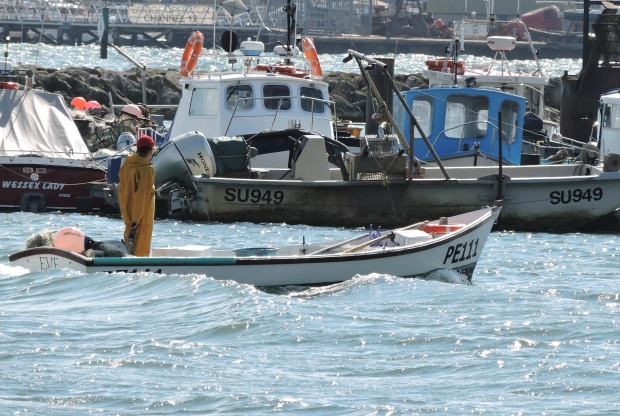We have another message from Jim Davis this week. Jim is not only a trusted colleague and talented facilitator, he has also had some truly great experiences in life that he is able to draw on and learn from. I always look forward to sharing his stories and hearing his messages. ~ Todd
Last time we met I shared a leadership lesson I learned from loggers who work closely with the land. The message was about honestly and accurately recognizing your impact on people, processes, and environment. (Hey, when you’re a leader…you ARE impacting things ALL the time! Make it count on the positive side of the ledger.)
If you read that last post, you may remember that this was during the time of my life when I was traveling around the country with a small TV crew to interview people from many different walks of life. While traveling, one of our favorite destinations was the Lakes Country of Minnesota and Wisconsin. We loved the blue waters (and sky!) and the different energies- from the tranquility of wilderness lakes to the motorized adrenaline rush of jet skis and “go fast” boats on larger vacation lakes. We found interesting people and stories everywhere!
The one constant in Lakes Country is fishing. This week I want to share a leader lesson I learned from fisher people (women and men).
#2…It’s not always as simple as it seems.
Fisherfolks have to know, first and foremost, what fish they’re trying to catch. You don’t just “go fishing!” You go fishing for lake trout or pike or catfish or bass. The “objective” of your outing will determine several other considerations: what bait you’ll need, what time of day you’ll be on the lake (or maybe on the shore), where and when you’ll need to place the bait, and how the weather might influence your outcome. These are complex sets of data, knowledge, and insight that will vary with circumstance, and become increasingly refined through repeated experiences.
We can all learn from Fisherfolk and apply those lessons to our lives and work by making an effort to understand our objective, recognize the resources we have, and analyze various strategies for deploying those resources.
Objective
What are you going for? If you are a leader in a business the answer to this question is rarely as simple as “Catfish!” Your objectives are usually multidimensional, and often not all that clear. Thus, it is important to sit with this question for a bit!
Perhaps you are thinking that what you’re going for is greater production or output. Fantastic. Maybe that objective exists in conjunction with something else you’re “going for”; for instance, building up a new team- which probably means you’re also “going for” process improvements and efficiencies, and faster, more effective development of individual team members.
Sort it all out. Simplify, clarify, and list your objectives, but don’t leave any out. Deep and broad understanding of all that you are “going for” will help you immensely in bringing the right resources to the task.
Resources
People, time, and money are the resources at the top of your tackle box. They are your primary bait. Now, go deeper! Imagine yourself a fly fisherman studying her collection of hand-tied flies. Which one is just right for this objective? Why?
When examining your people resources look at their experiences, perspectives, skills, and current state. Think about the impact of relationships among them.
Think about how time and money will play together, not just in the near term or for your team. Time and money interact over a long arc and across a greater scope and span. Connect time and money to process as well. Process, time, and money are interactive and dynamic.
Strategies to deploy
One of my favorite quotes is “Don’t just do something! Sit there!” Flipping our normal take of these two ideas on its head is great wisdom for developing strategy. Too often we just say, “GO!” without having given enough consideration to WHY we’re going to do whatever we’re going to do, at the time and in the manner in which we’re going to do it! Think about it. Consider the objectives, resources, and the what, when, where, how, and why of deploying those resources.
Once you apply these suggestions to your processes, you’re guaranteed to catch more fish!




